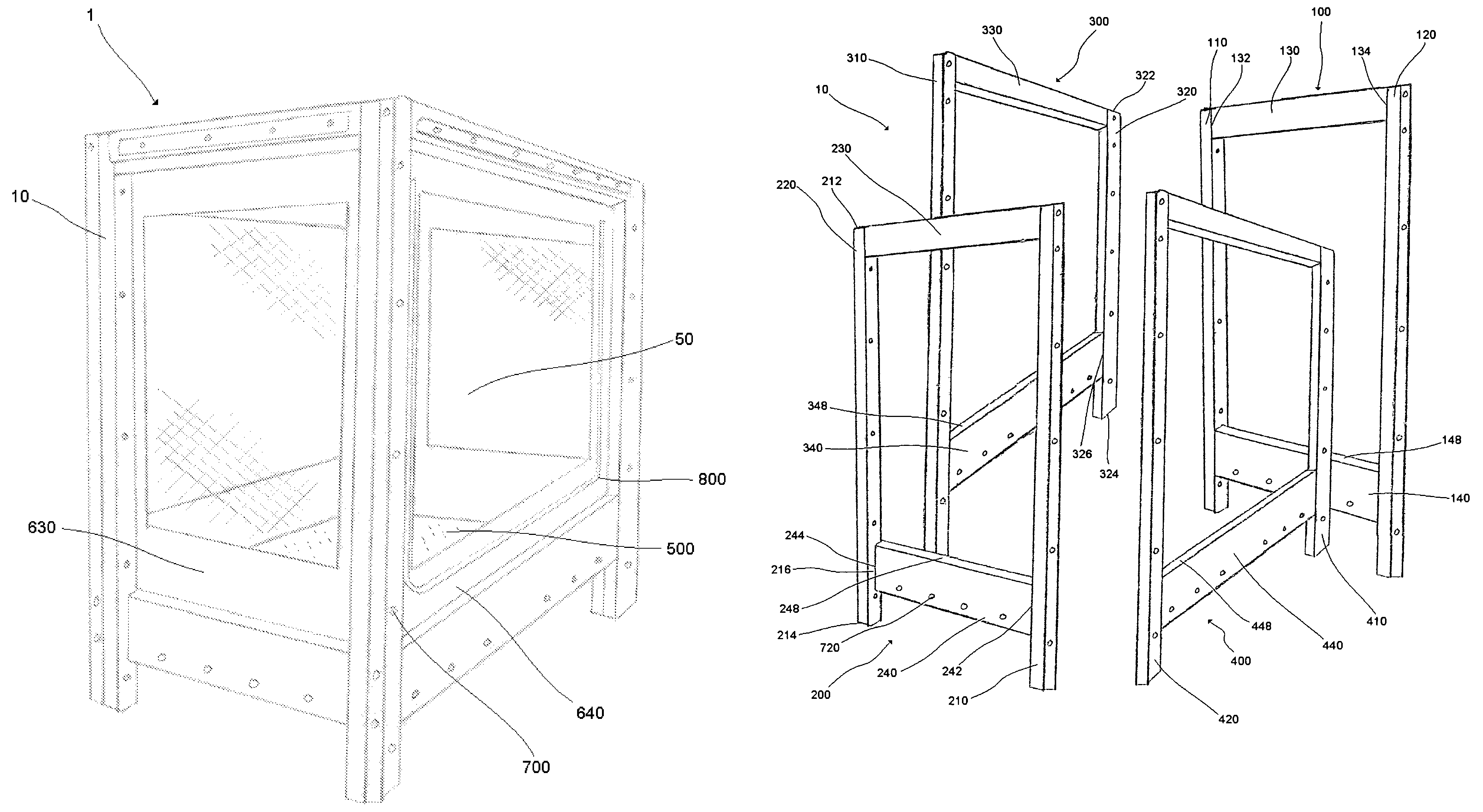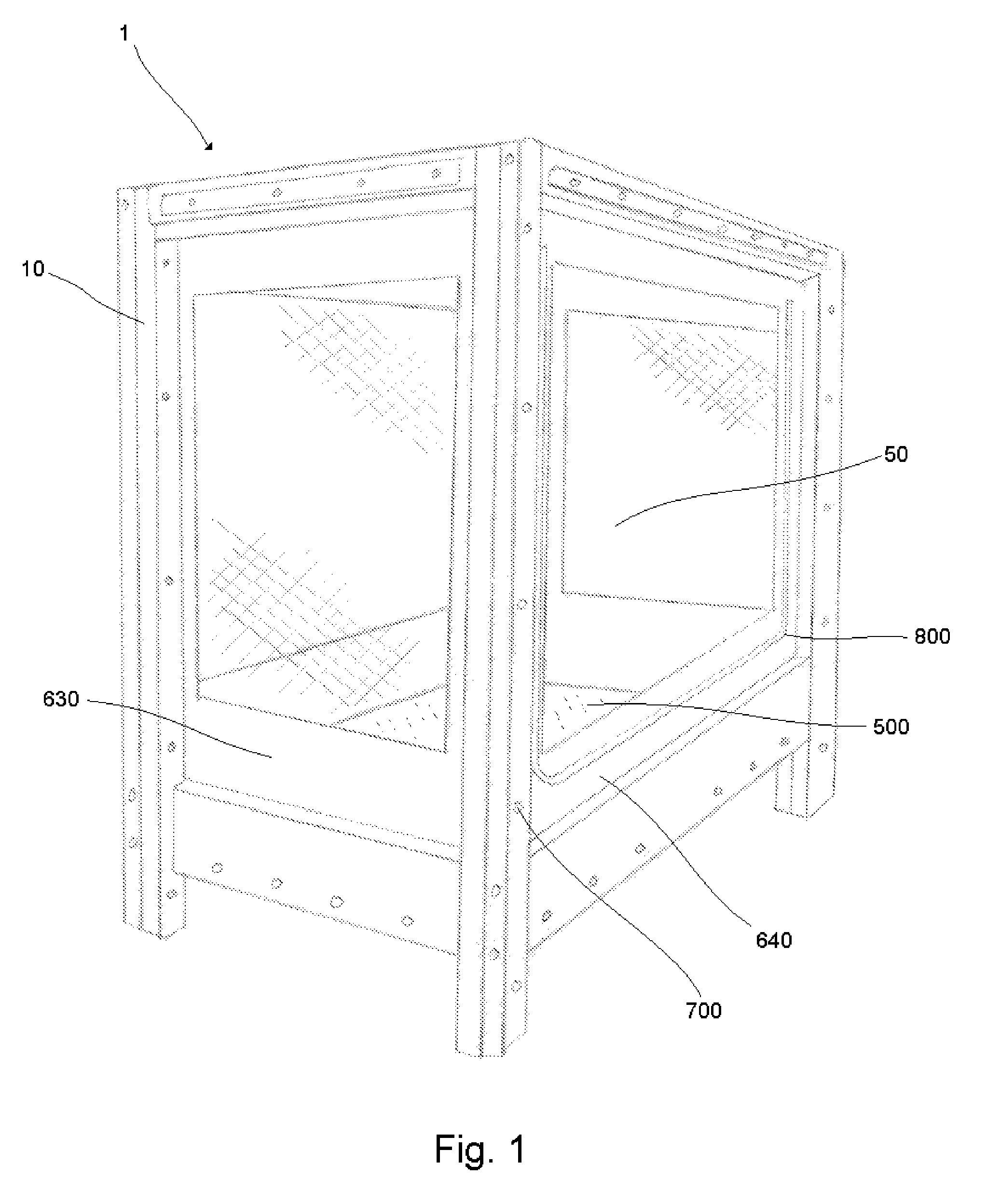Bed enclosure
a technology for enclosing beds and beds, applied in the direction of sofas, doors/windows, protective devices, etc., can solve the problems of multiple mental or physical disabilities, prone to injury, and difficulty in sleeping in a standard bed, so as to prevent injuries, facilitate cleaning and repair, and ensure the restraint of a person
- Summary
- Abstract
- Description
- Claims
- Application Information
AI Technical Summary
Benefits of technology
Problems solved by technology
Method used
Image
Examples
Embodiment Construction
[0026]The bed enclosure 1 of the present invention is comprised of a frame 10, a mattress support component 500 supported by the frame 10, four sidewalls 610,620,630,640, each removably attached to the frame 10, and an access mechanism 800 to access the interior of the bed enclosure 1. See FIG. 1.
[0027]The frame 10, mattress support component 500, and four sidewalls 610,620,630, 640 define a sleeping space 50, with the sleeping space 50 formed by and partially enclosed by the frame 10, sidewalls 610,620,630,640, and mattress support component 500. The bottom of the sleeping space 50 is defined by the mattress support component 500 and the sides of the sleeping space 50 are defined by the four sidewalls 610,620,630,640. The top of the sleeping space 50 is left open. A bed mattress 5 is placed within the sleeping space 50 upon the mattress support component 500. This configuration provides sufficient restraint to the user without presenting an overly restrictive sleeping environment, ...
PUM
 Login to View More
Login to View More Abstract
Description
Claims
Application Information
 Login to View More
Login to View More - R&D
- Intellectual Property
- Life Sciences
- Materials
- Tech Scout
- Unparalleled Data Quality
- Higher Quality Content
- 60% Fewer Hallucinations
Browse by: Latest US Patents, China's latest patents, Technical Efficacy Thesaurus, Application Domain, Technology Topic, Popular Technical Reports.
© 2025 PatSnap. All rights reserved.Legal|Privacy policy|Modern Slavery Act Transparency Statement|Sitemap|About US| Contact US: help@patsnap.com



